Sighişoara, Sibiu & Cluj Napoca March 10-14
March 10 Sunday: Braşov – Sighişoara
The weather had changed. The whole area was cloaked in mist when I left the hostel at 9am. It’s atmospheric and tranquil without any tourist. I climbed all the towers which door was opened. I was awarded with fantastic views of the old town from the White Tower, the Black Tower, on the northern side and Tailors’ Tower on the southern side.
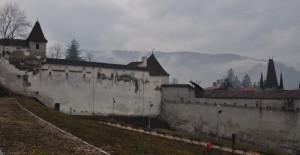 |
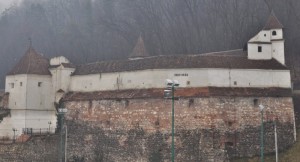 |
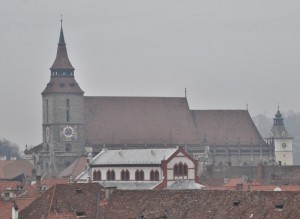 |
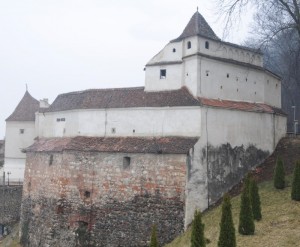 |
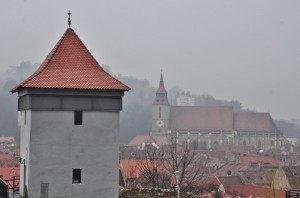 |
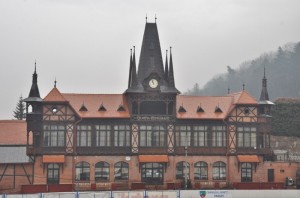 |
After the city wall walk, I went to the Black Church built in Gothic style between 1383 and 1477, the wall of which was darkened as a result of a great fire in 1689. Hundreds of 17th – century Anatolian carpets donated by merchants to the church now decorate the church. On my way to the 1.3m-wide Str. Sforii (Rope Street), the narrowest street in Romania, I passed by the synagogue built in Moorish style.
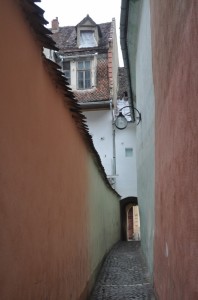 |
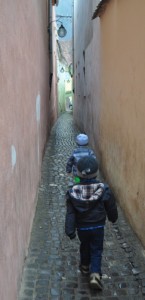 |
 |
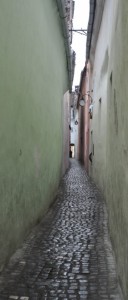 |
I departed Braşov before 4pm and had a scenic ride to Sighişoara. I had a comfortable assigned seat on the train for 50lei. It was about 6pm when I started to look for a hostel near the train station. Unfortunately, it was closed and I had to walk to the old town to find a room. A local recommended me to stay in Jolly Pension. I paid 75lei for a nice and cozy room and had a good sleep.
March 11 Monday: Sighişoara – Sibiu
As the pension staff did not know the bus or train timetable, I had to walk to the bus and train station to find out the schedule and did not arrived at the citadel till 10am.
Sighişoara was founded by German craftsmen and merchants known as the Saxons of Transylvania around 12th century. The historic centre is composed of a fortified site (originally with 14 towers and four bastions) built after the Tartar invasion in 1214 spreading over a steeply sloping plateau and dominated by City Hill and the Lower Town. It is a fine example of a small fortified medieval town that displayed an important strategic and commercial role on the fringe of central Europe for several centuries.
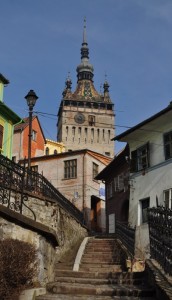
|
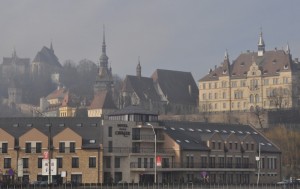 |
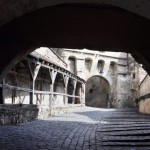 |
Today the citadel still looks majestic with nine towers and two bastions. I entered the citadel through the iconic Turnul cu Ceas (Clock Tower) where each night at midnight one of seven wooden figures emerges from the belfry to gaze over the lower town. The citadel is not too big and all the main cobble-stone paths lead to the Citadel Square. The birthplace of Vlad the Impaler is now a yellow building on the Square with a restaurant. As it was Monday, all the museums were closed. I spent two hours mainly looking at churches, towers and the picturesque houses most of which have been renovated.
The Monastery Church (now Lutheran) has a stark whitewashed interior hung with colourful Anatolian carpets similar to those in the Black Church in Braşov. On the way to the Shoemakers’ Tower, I passed the huge neo-Renaissance style City Hall (1886-88) and the Roman Catholic Church. After taking a look at the Taillors’ Tower and the Furriers’ Tower, I took the 179-step wooden Scholars’ Stairs to the Church on the Hill (or Church of St Nicholas) built between 1345 and 1525. It is now a museum housing some remarkable stones carvings, three Gothic altars and many huge wooden boxes excavated from an archaeological site. The Saxon cemetery next to the church is peaceful and atmospheric.
 |
I took the 12:30pm and arrived in Sibiu two hours later. After searching for over an hour, I finally found a nice pension called Casa Romana near the Ursuline Church (1474-78) and within walking distance to the train and bus stations. The young receptionist speaks fluent English and is very nice and helpful. I paid 80lei for a small but cute single room on split floors. I felt comfortable and eventually stayed three nights.
March 12 Tuesday: Sibiu – Medias – Biertan – Mediaş – Sibiu
I made a side trip to Biertan and Mediaş (I could have visited both places on the way to Sibiu but I did not want to change hotels every night). The return train ticket to Mediaş only cost 14lei. The journey took almost two hours as it stopped at all the villages along the track (the bus only took an hour). The bus to Biertan already left Mediaş when I arrived at 9am. As the next one would be leaving at 12:20pm, I decided to take a taxi and found one near the synagogue. The driver asked for 55lei.
Biertan, a World Heritage property is located 30km from Mediaş. The route is scenic once I got off the main road. Biertan is a late Gothic hall-type building completed around 1522-23 on a low hill with two lines of walls at the foot of the hill. The church and the walls were built at the same time. When I reached the fortified church, I found a “Closed for winter” notice on the door. The taxi had left and the next bus was at 1:30pm. What should do in the next three hours?
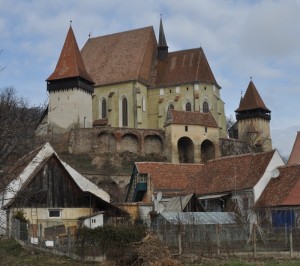 |
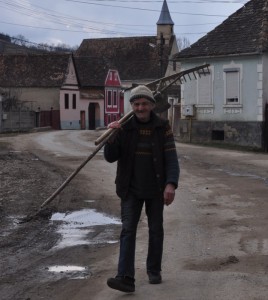 |
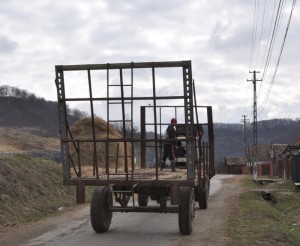 |
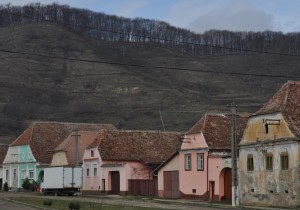 |
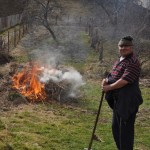 |
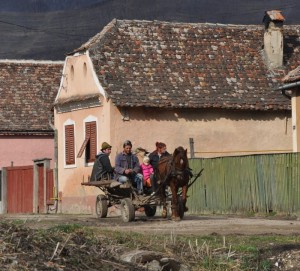 |
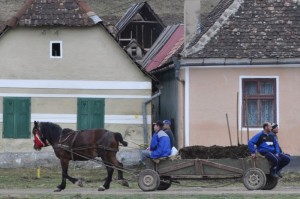 |
I did not waste my time. Instead of sitting at the bus stop, I walked around the village watching the locals taking their ploughs and hoes to work in the field and horse-drawn carts passing by. As there is not much to do in Biertan, I decided to walk to Copa Mare which has a massive three-naved Gothic basilica built in early 14th century. This 3-4km walk turns out to be the most interesting walk I had in Romania.
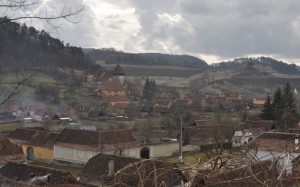 |
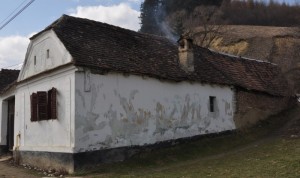 |
The village is in valley and villagers have to walk 3km to Biertan to catch a bus. The fortified church is smaller and in a dilapidated state. The village is also the poorest one I have seen on the entire trip. I used a toilet in a shop which is similar to those in a poor Chinese village.
I took the 1:30pm bus back to Mediaş, a predominantly Saxon walled town for many centuries with gate towers. The main attractions include the 15th century Evangelical Church housed inside a citadel, Piaţa Regele Ferdinand I and the Schuller House (1588) which once hosted the Transylvanian Diet. The church was closed and a key-keeper kindly opened it for me. I was impressed by the frescoes and three superb Gothic altars including a Crucifixion with a view of Vienna painted in 1474-79.
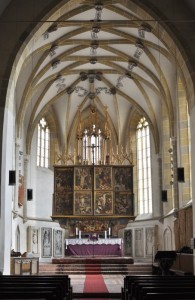 |
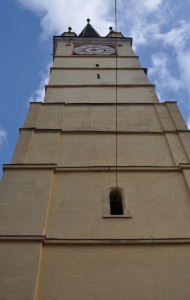 |
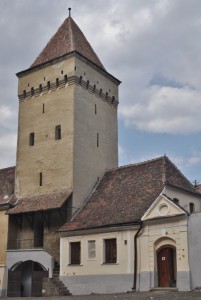 |
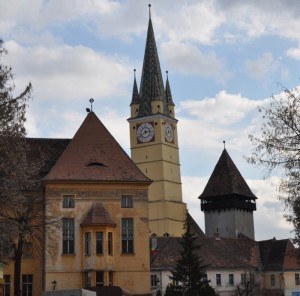 |
I had a full day and got back to Sibiu before 6pm. I ordered a mixed grill and a glass of red wine at a French bistro called “Patron”. The place is stuffed with sewing machines, typewriters, gramophones, old books etc. The dinner cost less than 40lei.
March 13 Wednesday: Sibiu
Sibiu founded in the 12th century was the chief city of the Transylvanian Saxons. The old town is an architectural gem with three beautiful conjoined squares namely Piaţa Mare (Large Square), Piaţa Mică and Piaţa Huet, the 18th century Brukenthal Palace (home of the governor of Transylvania from 1777-1787), many churches and merchants’ houses. Some of the oldest houses were built in the 14th century. Strolling aimlessly in the old town is the best way to soak in the atmosphere and appreciate the grand buildings most of which in Baroque style painted sky blue, red, orange, apricot, yellow or green.
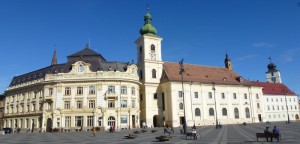 |
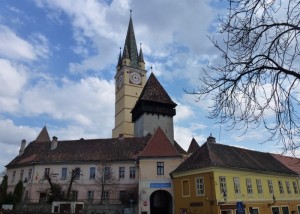 |
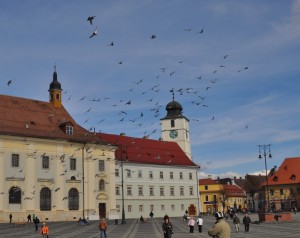 |
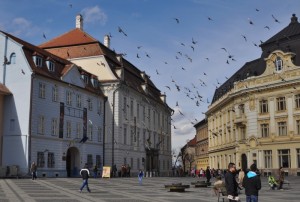 |
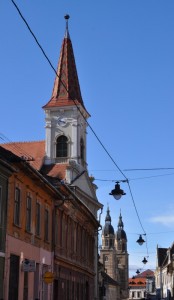 |
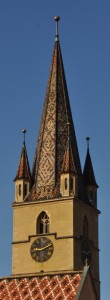 |
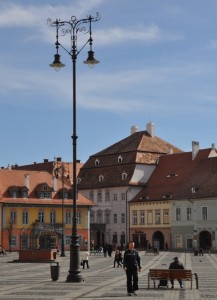 |
I brought a museum pass for nine museums for 42lei and had time only to visit six of them. I am impressed by the collection of Romanian and Western art in the Brukenthal Museum, the exhibits in the Pharmaceutical Museum and the neat and nice presentation in the History Museum where I had to climb a narrow staircase to the top of a tower to see the treasures of the town.
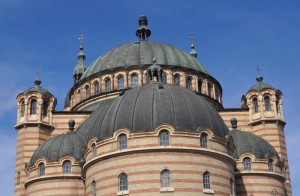 |
In the afternoon, I took a local bus to the open-air Museum of Traditional Folk Civilisation located in a wood. Some 150 old structures (houses, workshops, windmills, churches etc.) are divided in themed areas. When I reached the top of the ridge, I saw several ranges of mountains covered with snow. Once again, most if not all the structures are locked and one has to pay extra for photo-taking. I like fresh air but find something lacking with the way with such presentation.
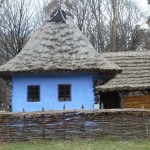
|
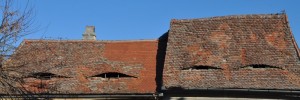
|
I was recommended to have dinner at Restaurant Venetia at the bottom of the Passage of Stairs. I took the dish of the day which was chicken fillet and had a nice glass of local red wine for only 35lei. In the evening, I joined millions of TV viewers round the world to watch the new Pope Francis greeting the crowd at St Peter Square. I like his kind face and soft and humane but firm voice and believe he will be a popular pope.
March 14 Thursday: Sibiu – Cluj Napoca
I took the 6am bus and saw a most beautiful sunrise with gorgeous golden, pink and orange colours. Then it started to rain. At 9:45am, I arrived in Cluj Napoca (Cluj), the former Hungarian capital of Transylvania and the second largest city in Romania. As I would be leaving early the following day for Baia Mare, I stayed in a hotel next to the bus station. The room is small and basic. But the rate was reasonable (80 lei) and clean linen was provided. What more can I ask for?
My brief stay in Cluj turns out to be interesting. The town founded by Germans in the 12th century has largely retained its former flair as it escaped the widespread demolition during the communist era. The old town is charming with many squares, weathered fin–de–siécle backstreets, grand university buildings and churches in all styles. It has a lively and youthful atmosphere with university students hanging out in cafés, pubs and cheap eateries.
I took a bus from the hotel to the old town and began my walking tour at the grand Orthodox Cathedral. The National Theatre and Opera House opposite the Cathedral has a strange architectural style. I arrived at the Tailors’ Bastion which has been restored and is used for temporary exhibition. Close by is the Reformed Church which is closed. I reached the lively university area seeing a lot of young people on the street. I entered the Babes-Bolyal University and a Parish Church next to the University.
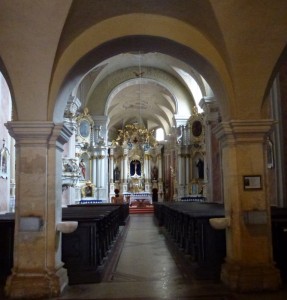 |
When I arrived at Piaţa Unirii, the heart of the city, I went to the Cathedral of St Michael built between 1349 and1487 in German Gothic style. When I sat down on a bench in the Cathedral, I was surprised by the warm seat. Though the country is poor by EU standards, the people spare no effort in keeping and maintaining the churches.
From Piaţa Unirii, I went to the Ethnographic Museum of Transylvania which is one of the best ethnographic museums I have seen in Romania. The collection and explanations are fine but dry and dull. I saw a Chinese fast food shop and had a quick lunch for 15lei. The food was acceptable but the sauce was too salty.
I zigzagged across the city passing the 15th century mansion on Str. Matei Corvin which is the birthplace of Mátyás Corvinus Hungary’s greatest king born in 1440. I reached the Museum Square but did not go into the History Museum. Instead, I went into the Franciscan Church (13th century) which has been rebuilt in Baroque style with fanciful altar and statutes.
My last stop was the Art Museum housed in the Banffy Palace opposite the Cathedral of St Michael. It is not big but has a good collection of Romanian artists. I tried to see the other side of the river before returning to the hotel. Before long, I found myself at the Hungarian Theater and Opera and brought a ticket for La Bohéme for 30lei.
I have seen this opera a couple of times. I have no music ears but thoroughly enjoyed the lively performance. The performers look professional and sing with passion and energy. The opera house is not grand but intimate. There were three intermissions (!) and the performance finished around 9pm. I took half an hour to walk back to the hotel. What a full day in Cluj!


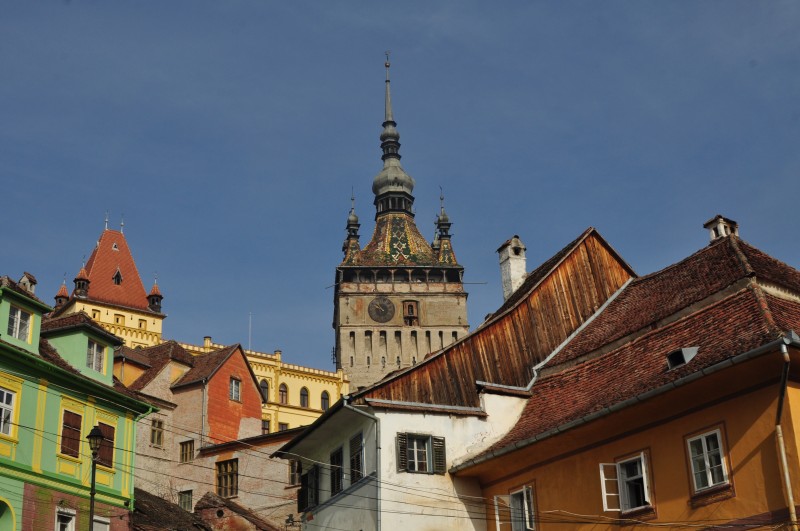
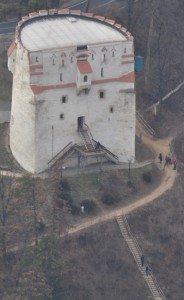
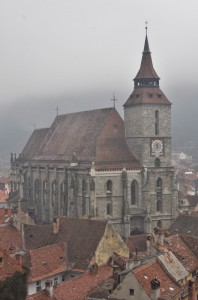
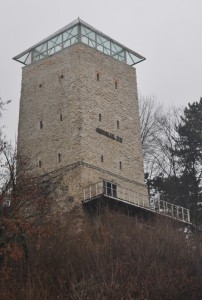


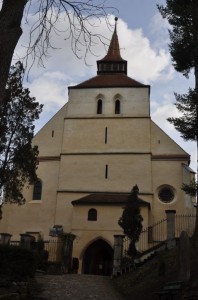
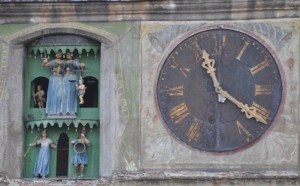
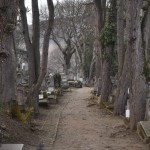
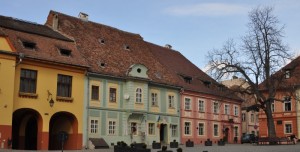

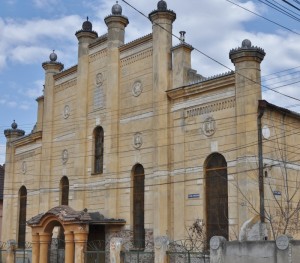
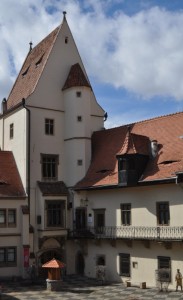
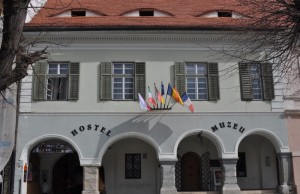
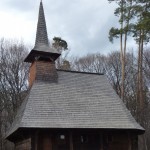
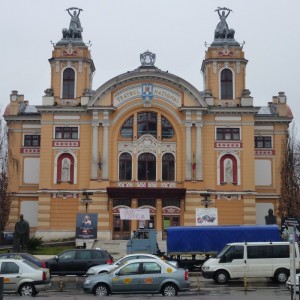
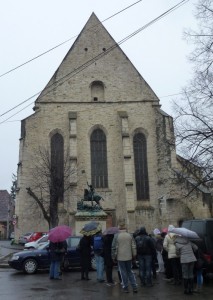
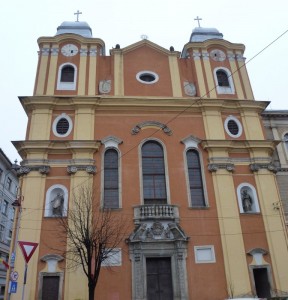
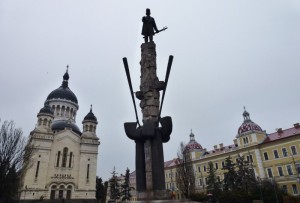
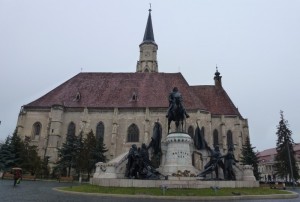
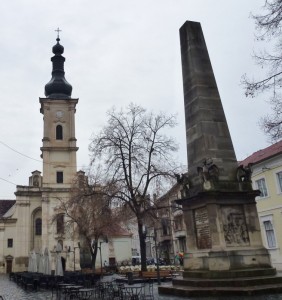
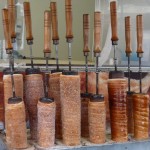
Hi, Sarah,
Sth has gone amiss on your webpage. I tried to read the Religious Romania section and found the whole background is now wood panel, brown in colour, making reading the print rather difficult. Moreover, there is a white strip running down the left side , covering the print and photos on the left side of the page, so that part of your message is missing.
I may be going to Bucharest , Romania, next yr, so I am interested in your experience.
Maureen
Hi, Sarah,
The odd page is now fixed. I can read the contents OK. But I have difficulty catching up with your travels. Just reading the script is slowing me down.
Shall we meet on JUne 8, Sat , mid morning ? and lunch afterwards ? Let me have your address and phone no. Mine is 9189 8289.
Maureen